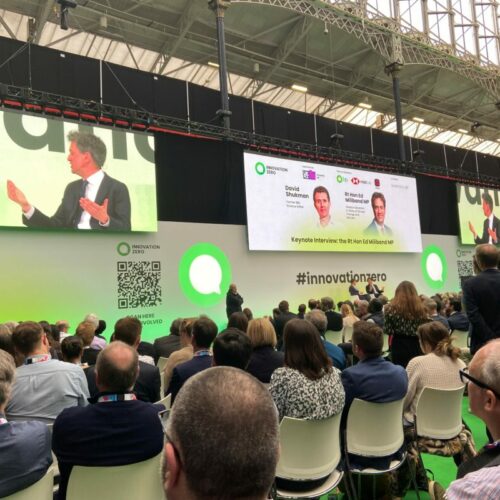As Ofgem works with industry to review electricity system balancing this Spring and Summer National Grid Energy System Operator (ESO) chief engineer Roisin Quinn looks back over this period and offers her thoughts on the challenges posed by COVID-19 and the lessons learned.
1) A new and unprecedented challenge
COVID-19 has changed society, with restrictions and social distancing meaning new ways of working and living. This, coinciding with the sunniest spring on record in the UK, has had led to significant impacts on electricity in Great Britain. At times demand has fallen to 20% below expected levels and zero carbon sources have made up their largest ever share of the power mix. This has made keeping the power system stable require more interventions than ever before.
2) Protecting our colleagues and core operations
As the full extent of the pandemic became clear we took a number of measures to protect our colleagues in critical roles, new layouts enforcing social distancing, additional hygiene measures and new shift patterns with teams permanently split across different sites. These steps further increased the resilience of our control rooms and meant that throughout the pandemic we have been able to control absences amongst these critical staff to only a handful.
I’m proud of all ESO colleagues who have worked throughout this period to continue to operate a safe, secure and reliable electricity system. They’ve risen to all the challenges thrown at them, be that adapting to new conditions in our control rooms or adjusting to the new normal of home working and the added pressures of caring for loved ones that can go alongside this.
3) Ensuring safe, secure and reliable electricity
This is an important moment for our understanding of what a zerocarbon electricity system could look like, including some of the operational challenges that need to be addressed.
High levels of generation and low demand, such as we’ve seen this summer, can raise the risk of oversupply and reduce the system’s resilience to sudden changes in frequency – with reduced levels of its inherent shock absorber, inertia. Managing inertia is something our control room engineers do every day, regardless of the pandemic, increasing and decreasing sources of power. The unprecedented conditions brought on by COVID-19 have meant they’ve had to take more actions, on more days, to keep the system secure.
Again, I’m proud of their efforts to manage this engineering challenge. To help them, we added additional tools for our control room, such as our Onward Downward Flexibility management service and agreement with Sizewell B to reduce its output – additional necessary actions to help manage reduced demand.
4) Minimising the impact of cost increases on consumers
Even without COVID suppressed demand there are significant costs involved with keeping electricity in balance, with millions spent on balancing the grid – paying generators and market participants to increase or reduce output and keep the right mix of power in place. As the head of our control room I know how hard our engineers work to ensure they always choose the cheapest generator or balancing option, all the actions we take are carried out in economic order to ensure we operate the system as efficiently as possible.
It is true that costs have increased this summer but, we are confident the actions we have taken have minimised this, with the potential implications of emergency actions and the associated disruption being even greater. It’s also important to note the largest proportion of the cost increases was driven by needing to take more of our day to day balancing actions in the control room, rather than the new measures we have specifically introduced.
5) Supporting the wider industry
Overcoming the challenges posed by COVID has only been possible by working in partnership with the wider electricity industry – pulling together to make sure of a safe and secure grid.
We’ve increased our communications making sure stakeholders were aware of the actions we took and the reasons behind them. In May we shared our Summer Outlook report, to help industry with their planning and every Wednesday our control room colleagues host a webinar for the wider industry on that week’s events – something that has proven so popular with stakeholders we are continuing into the winter.
We’ve worked closely with Ofgem and BEIS, with regular meetings to discuss system operation, and our colleagues in Electricity Transmission and Distribution Network Operators too, making sure that together we kept the electricity system safe and secure.
We’ve also helped industry manage the unforeseen new costs driven by the pandemic, with increased transparency and support for a change to the way that we recover system use costs (BSUoS), capping tariffs and providing £100m of support.
6) A glimpse of a future grid
Managing this combination of low demand and high renewables shows that we can operate a greener grid, and sooner than we thought. Our Future Energy Scenarios suggest that by the 2030s and 2040s, reduced demand periods will be much more frequent – likely to be the normal state of affairs in summer, and quite usual in spring and autumn. They also suggest the power mix will continue to change, with traditional power station closing and increases in renewable and generation.
In April 2019 we announced our ambition to be able to operate the grid at zero carbon in 2025 with the plans in place to deliver this addressing many of the challenges faced this Spring and Summer. We’ve made great progress towards zerocarbon already and work on key projects has continued throughout the pandemic. We’ve recently announced the second phase of our Stability Pathfinder project for Scotland, with the first phase seeing generators already providing stability services to the grid. We’re seeing new providers managing voltage too, with batteries providing reactive power as part of our Mersey Pathfinder project. We’re widening access to the Balancing Mechanism, making it easier for smaller providers to play a part and are soon to be launching a new frequency product, Dynamic Containment – the fastest acting frequency response we have, to help keep the system in balance as we continue to decarbonise.
7) Lessons learned
It’s been a challenging period but we’re confident we took the right course to manage supply and demand throughout this unprecedented period and that, given the circumstances, we helped to minimise increases in system operation costs. We welcome Ofgem’s review and it’s vital, that in partnership with the wider industry, we learn from these unique events and plan a course forward as a sector to deal with the challenges COVID-19 is likely to pose for the foreseeable future.




